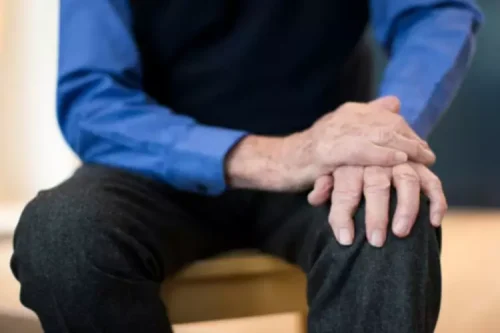
Reeves says he’s tried various approaches to manage his anxiety, depression, and night terrors, including medication, alcohol, and marijuana. This type of narrative is a main concern for folks who attend Psychedelics in Recovery groups, that psychedelic use is considered a relapse or can push them over the edge back to the substance that causes them the most problems. Or, another related fear that Negrin points out, that they’ll replace one substance with another, like get off prescription anti-anxiety or depression meds, only to become reliant on microdosing psychedelics. This demonstrates pharmacological interference with memory reconsolidation may allow overwriting of maladaptive drinking memories with clinical benefits. Psilocybin is the main psychoactive compound in ‘magic mushrooms.’ After the observation in 1953 in Mexico of ritual practices involving the ingestion of such mushrooms, psilocybin was chemically characterized and synthesized in 1958.
Psilocybin-occasioned mystical experiences in the treatment of tobacco addiction
While consciously augmenting sobriety with psychedelics might work for some, it certainly doesn’t for others. For example, even though Franciotti is passionate about psychedelics in recovery, and has helped to write safety guidelines for such use, he tells me he’s not currently using psychedelics (or any substances) since his last relapse in 2018. Addiction has been proposed as a ‘reward deficient’ state, which is compensated for with substance use (92). The method to assess neurotransmission in the human brain is through conducting neurotransmitter release studies.
The Psychedelic Arsenal: Nature’s Mind-Bending Medicines
- Some individuals find the abstinence-only model too rigid or feel alienated by the spiritual language.
- People who struggle with substance use may be vulnerable to new dependencies, right?
- More recent data suggest that MOR availability does not differ between pathological gamblers and healthy controls though impulsivity correlated with MOR availability in the caudate in the GD group (155) suggesting this may be a potential target for treatment.
Relapse rates remain high, and many people struggle to find lasting recovery. It’s like trying to put out a wildfire with a garden hose – sometimes, you need a more powerful tool. And in the last decades, psychedelics have emerged as a potential solution. Earlier this year, the National Institute on Drug Abuse gave a $2.7 million grant to research on psychedelics for addiction.5 As these therapies move from research into clinical practice – it’s essential for more clinicians to be educated in the principles of psychedelic therapy. There are physical risks of being dependent on alcohol and other substances. But people with substance use disorder are also more at risk for thoughts of suicide.2 Severe anxiety and depression are commonly co-morbid with substance use disorder.
- In the 1990s the first study of the use of ketamine combined with therapy in the treatment of alcohol addiction took place in Russia.
- But the enthusiasm for psilocybin and ibogaine for treating substance-use conditions has been gradually increasing.
- There is some evidence to suggest psychedelics can modulate PFC and cognitive function in humans.
- The scientific exploration of psychedelics in the 1950s and 1960s laid the groundwork for the modern resurgence of interest in these substances for mental health and addiction treatment.
- As we delve into this fascinating world, we’ll explore how these once-taboo substances are being repurposed to heal minds and transform lives.
Translational neuropsychopharmacology to optimize psychedelic therapy for addiction
- These rely on the principle that psychostimulants, such as methylphenidate or amphetamines, can reliably increase levels of endogenous dopamine (161), opioids (162) and more recently serotonin (163).
- Let’s talk about the ongoing support that patients may need after initial addiction recovery.
- These are supervised by one or several members of the co-therapy team, and may last between three and eight hours.
- There are physical risks of being dependent on alcohol and other substances.
Ibogaine has been used in traditional African shamanic practices for centuries and it induces a state of ‘oneirism’ or wakeful dreaming (29). Participants often report visual hallucinations and flashbacks of major prior life events with effects lasting up to 3 days (29). An open-label are psychedelics addictive case series of 33 patients with opioid addiction who were treated between 1962 and 1993 and dosed with 19 (±7) mg/kg found that 25 of the patients showed resolution of signs of opioid withdrawal without further drug-seeking until the end of post-treatment observation at 72 h.
- We are developing guiding principles to clarify these nuances and put forth several additional ones.
- We will address the fundamental roles of intrinsic large-scale brain networks in addiction, crucially the DMN and the SN, and their potential as targets for accentuating psychedelic-induced perspective change and therapeutic efficacy in addiction.
- Sarah Simmons, director of psychological wellness at Kaiser, said ibogaine holds a great deal of promise, but it also poses some risk.
- But for now, there are certain spaces where members can talk about their psychedelic experiences without fear of judgment.
- Whether that’s your sponsor, close friends, family, partner(s), or support groups like Psychedelics in Recovery (or a combination of all of the above), because honesty, openness, and community are crucial to avoiding old, problematic, addictive behavior patterns.
- The group meets online twice a month and membership is open only to those who identify as being in recovery from addiction.
Harm reduction activism challenges the punitive approaches to drug use, advocating instead for policies and practices that prioritize safety, education, and support over criminalization and abstinence. Psychedelics in Recovery honors these traditions by acknowledging the wisdom and practices of indigenous cultures. The group encourages participants to approach psychedelics with reverence and respect, understanding them not just as therapeutic tools but as sacred medicines with the power to heal on multiple levels. This perspective fosters a deeper connection with the self, others, and the natural world, aligning with the values of many indigenous traditions. The study also highlighted that while all participants valued their formal training, they felt that existing programs lacked the experiential component with ketamine that could deepen their understanding of the therapy process.
In addition, there are the ‘non-classic psychedelics’; ketamine, 3,4-methylenedioxymethamphetamine (MDMA) and ibogaine (from the Iboga plant). Given the mixed research findings, it is important to proceed with care and focus on scientific rigor and transparency. There is a need to better establish which of these drugs are most effective, how they should be administered, and who is most likely to benefit. New and future research efforts may benefit from exploring the underlying therapeutic mechanisms of the chemical component(s) of psychedelics in the brain. Such studies could facilitate the development of personalized medicines in the treatment of behavioral health disorders and provide needed data on potential abuse or side effects. Additionally, future studies can increase generalizability by recruiting subjects from diverse populations and expanding the sample size.

Plus, with most psychedelics, you can’t really use them to numb yourself and escape your problems like other substances. Instead, many psychedelics offer a deeper dive into those feelings, or a new perspective on your deeply held beliefs, and that can be too uncomfortable to dive back into day in and day out. A new non-profit in the psychedelic community, Project New Day, is looking to support these recovery groups. Founded by Mike Sinyard and Allison Feduccia, PhD, Director and Co-Founder of Psychedelic.Support (a psychedelic integration resource), they’re inspired by psychedelic experiences helping folks overcome their addictions, and want to give back to that community. For their first order of business, they created an advisory board of four clinicians and five people who are already involved in psychedelic recovery support groups, including Negrin and Franciotti. RSFC measures the temporal correlation of spontaneous BOLD signals among spatially distributed brain regions, with the assumption that regions with correlated activity form functional networks.

I was not interested in using psychedelics to develop the foundations of a grounded, disciplined approach to daily living. I suspect that this immaturity contributed to my eventual reliance on opiates, as a way of tempering the more manic tendencies I was experiencing from my grandiosely widening personality. Whereas prior to PIR my self-reliance on insights from psychedelic states bordered on self-delusion, through this fellowship I’ve found others I can identify with and have come to treat my experiences with reverence and integrity. Their potential to play a role in my recovery is not approached light-heartedly. Anyone who identifies as being in recovery from a behavioral or substance related addiction with an interest in integrating intentional use of psychedelics or plant medicine is welcome at Psychedelics in Recovery meetings.
Mental Health, Self Help

Addiction is a complex beast, a chronic brain disorder characterized by compulsive drug seeking and use, despite harmful consequences. It’s not just about willpower or moral failing – it’s a neurobiological condition that hijacks the brain’s reward system. If the patient decides to continue with psychedelic therapy after understanding the benefits, side effects, and risks – it’s time to have their psychedelic sessions. Despite all the craze around psychedelics, little research has been done to prove their efficacy treating addiction disorders.
Effects of psilocybin-assisted therapy on major depressive disorder: a randomized clinical trial
Even cocaine and other stimulant addictions, notoriously difficult to treat, are showing signs of yielding to psychedelic therapy. It’s early days, but the preliminary results are cause for cautious optimism. Leaders of the medical psychiatric team evaluate a patient for a psychedelic therapy consult. For instance, those with psychotic diagnoses and cardiac problems may not be appropriate.
